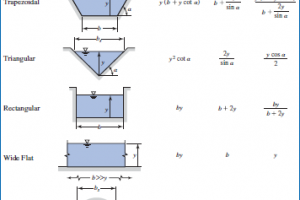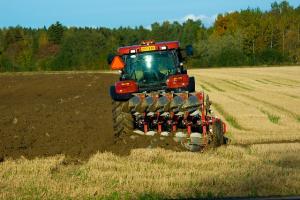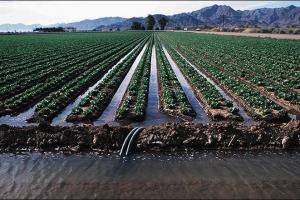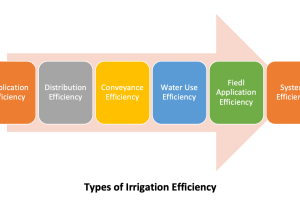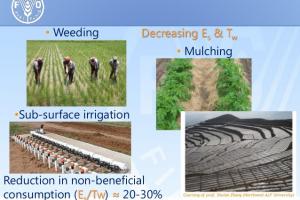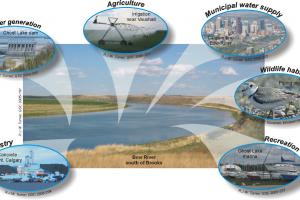Types of Aqueducts Based on Design, Materials, Functions

Aqueducts and Siphon aqueducts can be classified into different types based on various factors such as their design, construction, materials used, or specific features. Here is a general overview of the classification of aqueducts and siphon aqueducts based on some common factors:
Classification of Aqueducts based on Design:
Open Aqueducts:
Open aqueducts are designed as open channels or troughs that carry water over an obstacle. They typically have concrete or masonry walls or embankments to contain and direct the flow of water. Open aqueducts can be elevated on supports or built at ground level, depending on the topography and requirements of the area.
Closed Aqueducts:
Closed aqueducts are enclosed structures that transport water from one side of an obstacle to the other. They are often constructed as pipelines or tunnels and can be made of materials such as concrete, metal, or plastic. Closed aqueducts provide several advantages, including reduced water loss due to evaporation and increased protection against contamination.
Siphon Aqueducts:
A siphon aqueduct combines the features of both an aqueduct and a siphon. It is designed to carry water over an obstacle using the principle of a siphon. Here are two common types of siphon aqueducts:
Overground Siphon Aqueduct:
An overground siphon aqueduct, also known as a siphon bridge, is a structure that carries water over an obstacle, such as a valley or a depression, using the siphoning effect. It consists of a pipeline or conduit that rises above the water level on one side, crosses the obstacle, and then descends to the water level on the other side.
Underground Siphon Aqueduct:
An underground siphon aqueduct, also referred to as a siphon tunnel, is constructed underground to carry water under an obstacle. It follows the same principle as the overground siphon aqueduct but operates below the surface. The water flows under pressure, driven by gravity, and is conveyed through the pipeline or conduit from a higher elevation to a lower elevation.
Both types of siphon aqueducts rely on the siphoning effect to transport water over or under obstacles, providing a cost-effective and efficient solution for conveying water in situations where a traditional aqueduct or bridge may not be feasible or practical.
Classification of Aqueducts based on Material:
Masonry Aqueducts:
Masonry aqueducts are constructed using stone or brick masonry. The walls of these aqueducts are typically made of carefully laid bricks or stones that provide structural support and containment for the flowing water. The use of masonry materials allows for durable and sturdy aqueducts that can withstand the pressures and forces exerted by the water. Masonry aqueducts can be found in historic structures such as ancient Roman aqueducts.
Concrete Aqueducts:
Concrete aqueducts are built using reinforced concrete, which is a composite material consisting of concrete embedded with steel reinforcement. Reinforced concrete aqueducts offer strength, durability, and flexibility in design. The concrete structure provides rigidity and stability, while the steel reinforcement enhances its load-bearing capacity. Concrete aqueducts are commonly used in modern construction due to their versatility and long-term durability.
Metal Aqueducts:
Metal aqueducts are aqueducts made of metal, typically steel or cast iron. These aqueducts are often used for smaller-scale projects or industrial applications. Metal aqueducts offer advantages such as high strength and resistance to corrosion. They can be prefabricated and assembled on-site, making them a convenient option for quick installation and flexibility in design.
Types of Aqueducts based on Function:
Navigational Aqueducts:
Navigational aqueducts are specifically designed to carry water and accommodate the passage of boats or ships. These aqueducts are typically found in canal systems and provide a means for waterborne transportation across obstacles such as rivers, valleys, or roads. Navigational aqueducts may have specialized features such as locks or gates to control water levels and facilitate the smooth passage of vessels.
Irrigation Aqueducts:
Irrigation aqueducts are primarily used for conveying water for agricultural purposes. They are designed to distribute water from a water source, such as a river or reservoir, to farmlands or irrigation networks. These aqueducts often span considerable distances, allowing for efficient water delivery to support crop irrigation and ensure adequate water supply for agricultural activities.
Urban Water Supply Aqueducts:
Urban water supply aqueducts transport water for municipal or domestic use. They are responsible for delivering treated or raw water from its source, such as a reservoir or water treatment plant, to urban areas and communities. Urban water supply aqueducts ensure a reliable water supply for drinking, sanitation, and various other domestic and industrial purposes.
Hydroelectric Aqueducts:
Hydroelectric aqueducts are designed specifically for generating hydroelectric power. They transport water from a higher elevation to a lower elevation, allowing it to pass through turbines that generate electricity. These aqueducts are typically found in hydroelectric power plants, where the potential energy of falling or flowing water is harnessed to produce renewable energy.
Recreational Aqueducts:
Recreational aqueducts serve a dual purpose of water conveyance and recreational amenity. They are designed to provide opportunities for recreational activities such as boating, kayaking, or fishing while also serving as water conveyance structures. These aqueducts are often found in parks, reservoirs, or water recreation areas.





